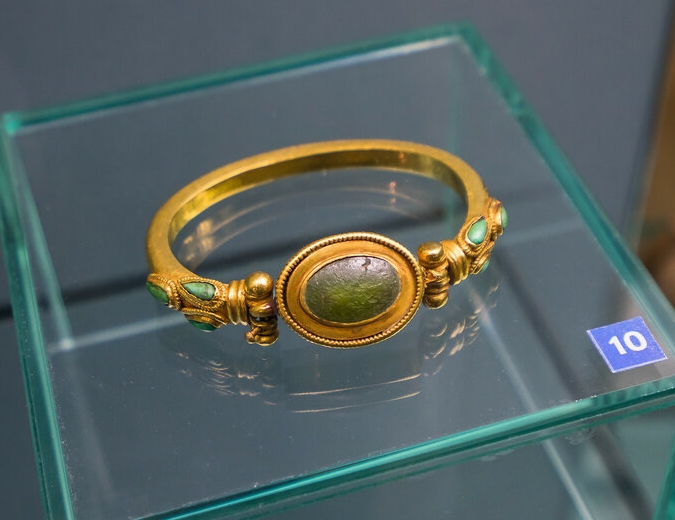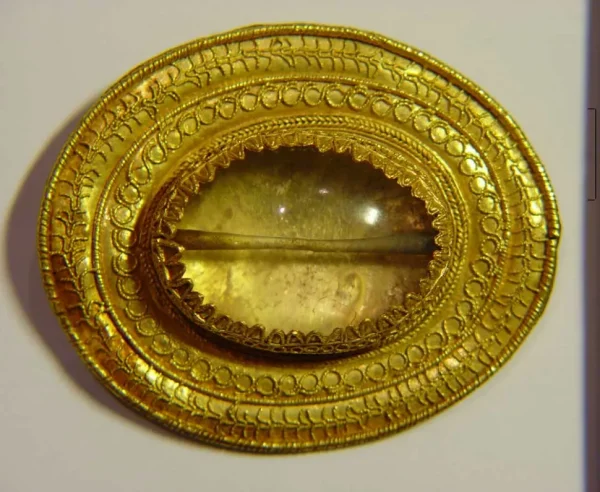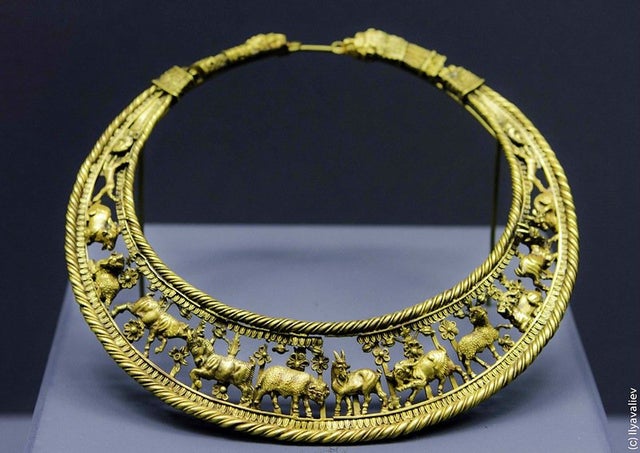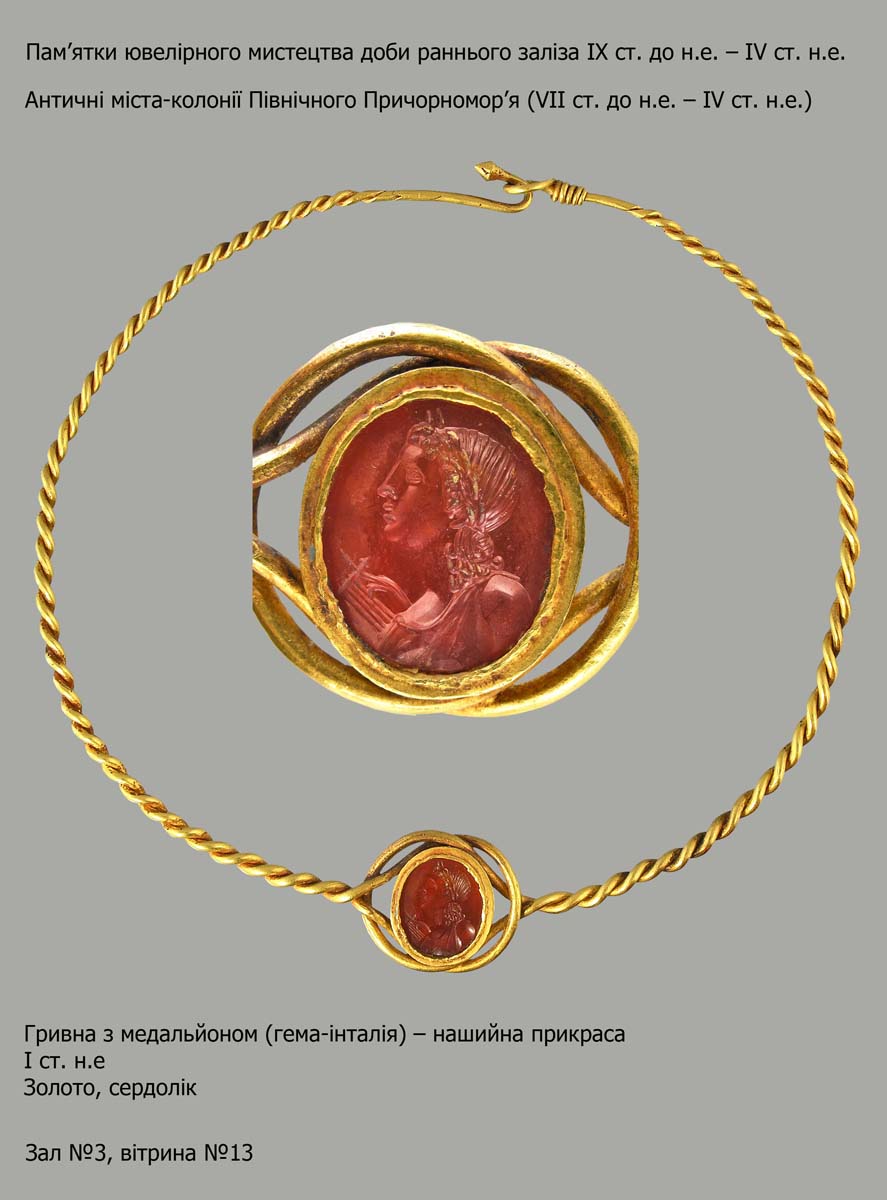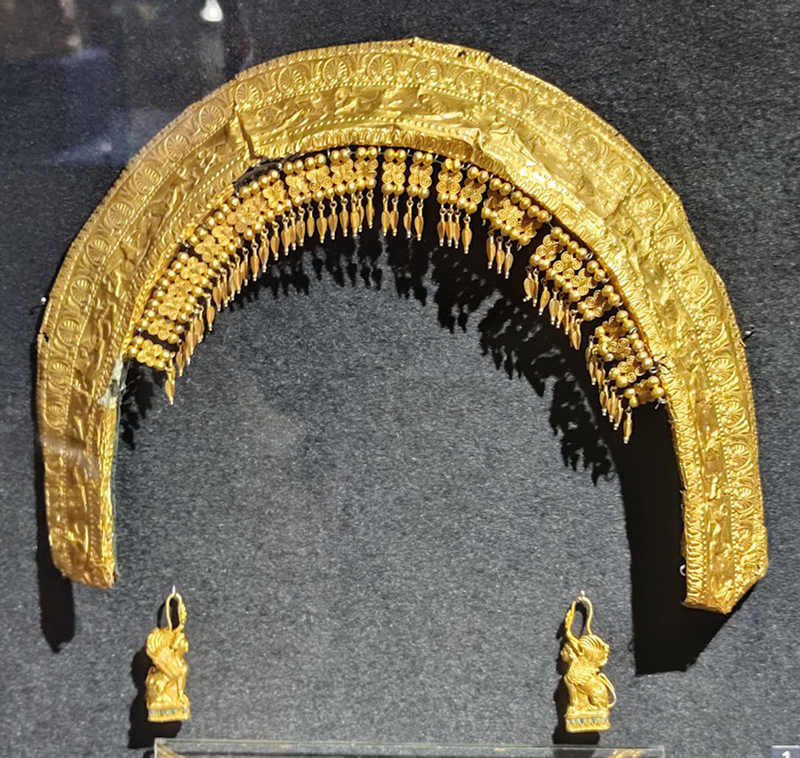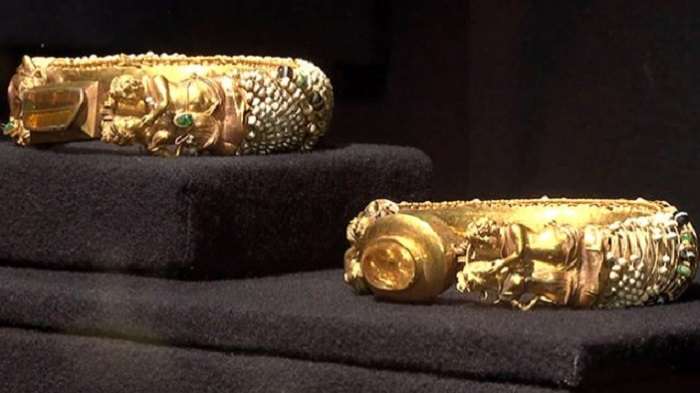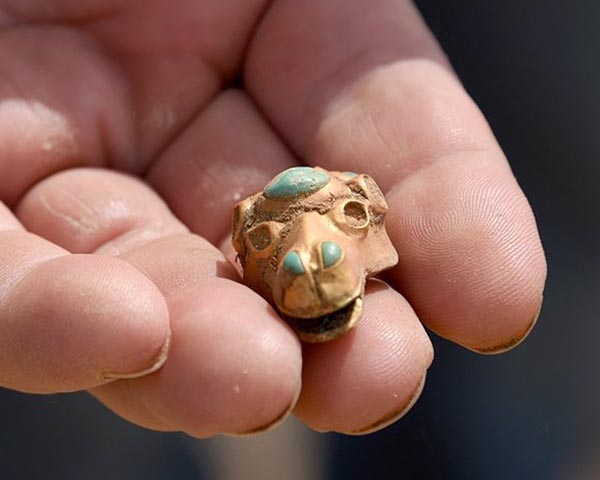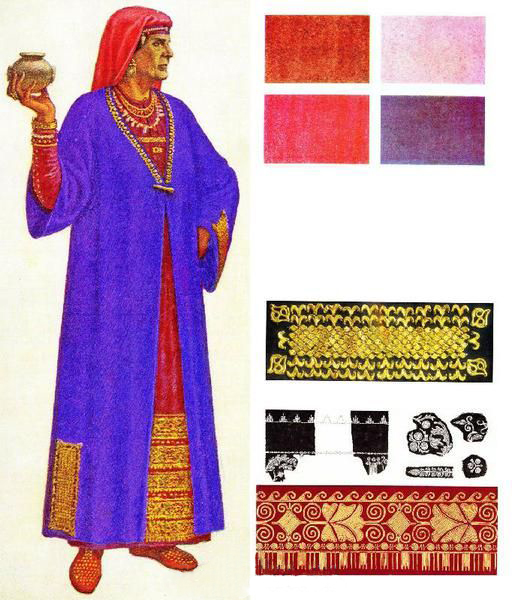


The two-part hryvna / collar, end of 1st – beginning of 2nd century.
Gold, turquoise. From the collection of the Rostov Regional Museum of Local Lore
In the center of the hryvna there is a male figure – either a god or a hero. He sits on a rug with a goblet in his hands, a sword in a sheath lies on his knees.
On both sides of the man, the scene of the dragon’s struggle with three strange creatures armed with clubs and dressed in armor is repeated three times. Three-toed paws, toothy mouths and human bodies – it is difficult to understand what kind of animals participated in the creation of these creatures. But the dragon is quite recognizable – it is a wolf, only very elongated and with wings.
Prokhorova T., Guguev V. A. Rich Sarmatian burial in a barrow on the eastern outskirts of the city of Rostov-on-Don. // Proceedings of the Rostov Regional Museum of Local Lore, vol. 5. 1988
Prokhorova T. A. The burial of the Sarmatian queen from barrow No. 10 of the Kobyakovsky burial ground. // Treasures of the Don steppes. From the collection of the Rostov Regional Museum of Local Lore. Catalog. 2018


Gold and glass necklace from a female burial. The Sladkovsky mound, Rostov region (excavations in 1978); 1st-2nd century. https://ar.culture.ru
The necklace consists of a gold chain and a massive pendant. In its center is placed a rectangular medallion – a nest with a convex insert of blue glass. Figures of griffins are symmetrically located on the sides of the medallion.


Earrings from Buzău, Romania, 1st century [read more]
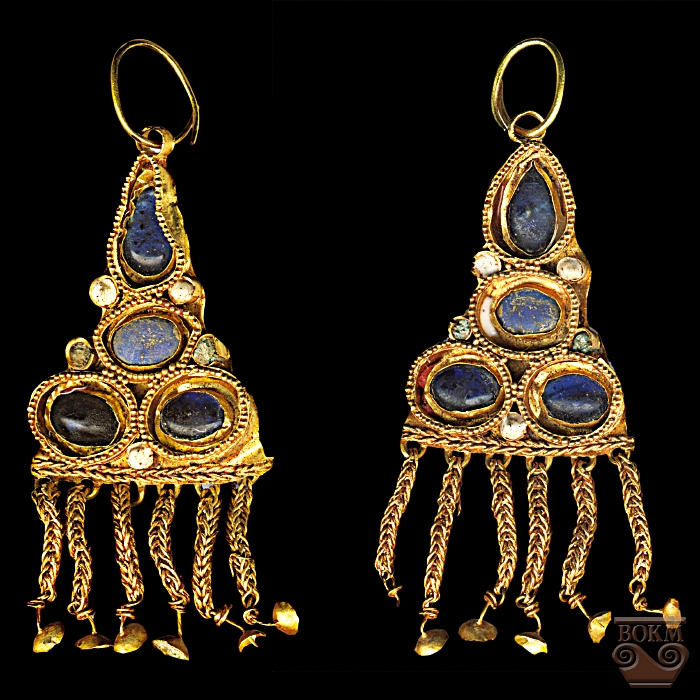
Temporal pendants. Gold, glass. 1st century. From a barrow near the village of Porogi, Yampil district, Vinnytsia region, Ukraine
Скроневі підвіски. Золото, скло.
І ст. н.е

Temporal pendants. Gold, glass. 1st century. From a barrow near the village of Porogi, Yampil district, Vinnytsia region, Ukraine
Скроневі підвіски. Золото, скло.
І ст. н.е

Gold earrings with amber-colored glass inlays, the Ilovlinsky district of the Volgograd region, Russia
https://sci.house/arheologiya-scibook/sarmatskie-pogrebeniya-bliz-stantsii-berdiya-109185.html

Ust-Alma (?)


Cemetery of Nyzats, Crimea, 4th century [read more]

[read more] 1st century, Tauric Chersonesos

Ukraine, 2nd-4th century [read more]

A pair of “noisy” temple pendants from the Sladkovsky mound, Rostov region (excavations in 1978); 1st-2nd century.
Female burial, pendants were attached to the headdress. Gold and carnelian, height 5.0–5.15 cm, bead diameter 1.15 cm.

THE RESULTS OF STUDYING THE TECHNIQUE OF MAKING GOLDEN HORDE PRODUCTS MADE OF NON-FERROUS METALS (FROM THE COLLECTION OF THE VOLGOGRAD REGIONAL MUSEUM OF LOCAL LORE) https://eesiag.com

На выставке “Золото сарматов” можно увидеть украшения, предметы культа, изделия в зверином стиле, а также артефакты из курганных захоронений. Экспозиция охватывает период с IV в. до н.э. по IV в. н.э. и знакомит посетителей с уникальным собранием из музейных фондов.
The Opushki burial ground near Simferopol, Crimea, 3rd century
According to scientists, the jewelry was found in the burial place of the ancestors of the medieval Alans who lived on the territory of Crimea in the 3rd century. Jewelry refers to the late Roman polychrome or, as it is also called, the carnelian style. Its distinctive feature is inlaid with large carnelians in combination with ornamented gold foil covering the silver base. This style was widespread from the Danube to the Caucasus and dates from the second half of the 3rd – the first half of the 4th century.
All finds are transferred to the Central Museum of Tavrida for storage.

Pendant / breast ornament, the Opushki burial ground near Simferopol; 3rd C, Crimea
The Crimea in the Age of the Sarmatians (200 BCE – 400 CE)
Mikhail Treister, Fusiform Unguentaria from the Burials of the Nomads of Asian Sarmatia https://www.academia.edu




Sarmatian medallion, a pendant according to the museum record
Köln, Römisch-Germanisches Museum, Inventar-Nr. D 70
dated to 101-400 CE; gold and glass

Gold pendant (?), 1st century BC-1st century AD, Sarmatian, Private collection
source https://www.meisterdrucke.uk
For similar ornaments see my post “Hellenistic brooches from auction”
- Vitalie Bârcă, THE REINTERPRETATION OF THE SARMATIAN FINDS FROM THE ROMANIAN PLAIN (I), Journal of Ancient History and Archaeology, 2/1, 2015, p. 35-71. DOI: http://dx.doi.org/10.14795/j.v2i1.105
- Vitalie Bârcă, Disc brooches of box/capsule type (Dosenfibel/Kapselfibel) in the Sarmatian environment of the Great Hungarian Plain. A few notes on their dating and origin. https://www.academia.edu
- Yuri Prokopenko, Fibula-Brooch with Pendants from the Barrow Studied in the Northern Surrounding Areas of Cherkessk. https://www.academia.edu









